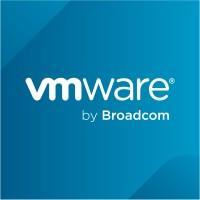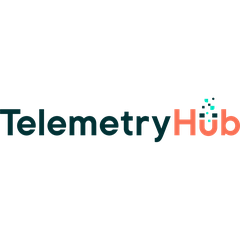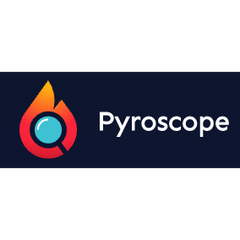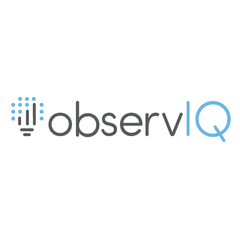
Honeycomb
Engineers can harness the power of Honeycomb to centralize their observability data, eliminating toil and enhancing user satisfaction. With rapid query capabilities and unlimited dimensionality, teams can glean insights from logs, metrics, and traces effortlessly. Its intuitive visualizations foster exploration and collaboration, empowering teams to resolve issues proactively and optimize performance seamlessly.
Top Honeycomb Alternatives
SolarWinds Observability SaaS
Designed for cloud-native, on-premises, and hybrid environments, this SaaS solution enhances visibility across diverse technology stacks.
Azure Managed Grafana
Azure Managed Grafana offers a fully managed service for deploying Grafana dashboards tailored for analytics and monitoring.
Fortified WISdom
WISdom transforms database management by unifying financial and technical teams, fostering system health, optimized coding, and cost reduction.
VMware Tanzu Observability
VMware Tanzu Observability empowers teams with enterprise-grade monitoring and analytics, addressing the complexities of distributed cloud applications.
Sentio
This development platform empowers teams to create crypto applications rapidly, enabling deployment at scale.
Elastic Observability
Elastic Observability empowers organizations to unify metrics, logs, and traces for enhanced visibility into their software environments.
BindPlane
With over 150 high-fidelity integrations, it enables seamless connections to monitoring tools, allowing users to...
Phlare
It enables developers to gain granular insights into application resource usage, facilitating performance optimization and...
TelemetryHub
It supports various architectures, including microservices and monoliths, enabling users to diagnose issues swiftly...
Splunk Observability Cloud
It enables teams to swiftly identify and resolve performance issues, enhances system reliability, and optimizes...
Pyroscope
By utilizing FlameQL, users can execute custom queries for swift analysis...
SolarWinds Observability Self-Hosted
By integrating data from networks, servers, applications, and databases, it offers a unified view of...
observIQ
Empowering teams with a no-code interface and robust OpenTelemetry integration, it simplifies operations, enhances compliance...
BMC Helix Operations Management
It centralizes observability data, enabling effective service health monitoring and rapid root cause isolation...
KloudMate
The platform reduces APM licensing costs by over 60%, providing a unified view of applications...
Honeycomb Review and Overview
DevOps and bug-tracking are the two essential processes that are required to ensure better code quality in development environments. It allows the developers to save time debugging the released code, which has already been deployed into production systems. Such systems should provide a method to analyze the code and ensure that the bugs are fixed. They should be able to test the use cases for different kinds of inputs and their corresponding outputs. It will lead to better management of system resources and more free memory for other applications. Honeycomb is a bug tracker and a DevOps software built according to this strategy. It provides solutions based on the observability of code and allows engineers to work efficiently. There are several intuitive features that are provided by Honeycomb to ensure the optimum quality of code.
Instrumentation and log collection
Logging is the best method for analyzing the shortcomings of the system and checking for any potential bugs they may have been in the code. The source code is instructed to write the warnings and errors it encounters into a text file and stores it in an easy to understand encoding format. This file is read and used to make changes to future versions so as to fix the issues and ensure the smooth execution of the program.
It can automatically collect the raw data to Honeycomb, and then the software digests the data to provide a structured log data. It is done at a high cardinality ratio to ensure greater precision. It gives a good head start for developers, and they can work on the primary issues faced by the software.
Intuitive UI that enables distributed navigation
The better the user interface of the debugger suite, the better the developer can understand the issues. It also leads to faster bug fixes. The user interface decides whether the developer is focused on the workflow or not, as flashy menus can distract them and prevent them from concentrating on their work. They provide methods to proactively examine the source code and dive into any production issue using time charts.
The distributed navigation system ensures efficient navigation through the pages that enable faster error detection. It facilitates timely bug fixes that eliminate serious issues by examining the code and its crucial details.
Faster query processing
Honeycomb allows for a blazing-fast query processing feature that can make test case input and subsequent output generation seamless and faster. It provides room for flexibility and customization and helps to understand problems faced by the source code during the execution. The developers can ask questions to find answers to the bugs they encountered while going through the program code.
The BubbleUp method performs automatic and instant detection of hidden outliers that tends to behave differently without adhering to the baseline code quality.
Collaboration features and overall experience
Team collaboration is essential for any bug tracking and DevOps software. Developers usually hunt in packs for finding out the bugs in the code. The collaboration service ensures methods to preserve and share information regarding how others solved the problem and provide solutions to save time and effort. Honeycomb has some powerful feature which will help it to become the best among DevOps suite.
Top Honeycomb Features
- Unified observability platform
- Unlimited dimensionality support
- OpenTelemetry compatibility
- Fast query engine
- Dynamic visualizations and insights
- Shareable queries and investigations
- Unlimited data fields
- Cost-effective telemetry management
- Context enrichment for data
- Real-time issue resolution
- Tailored pricing plans
- High-cardinality data handling
- Effortless knowledge transfer
- Cross-team collaboration tools
- Custom workflows for feedback
- Interactive charts for data exploration
- Service Level Objective (SLO) configuration
- Rapid log management improvement
- User behavior visualization
- Predictable and transparent pricing.














